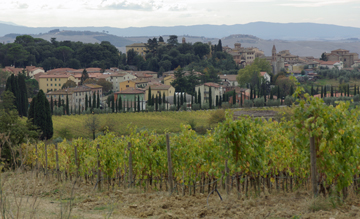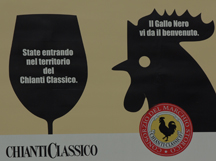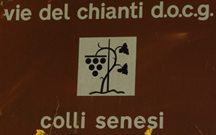Italy
Covid-19 Pandemic Update: Because of the world-wide pandemic, Wine Trail Traveler has not traveled since March of 2020. In late summer, we decided to conduct online interviews and write articles about wineries virtually visited. Some of these virtual visits included samples of wines. Articles on the sidebar that are a result of a virtual visit are noted as such at the beginning of the article.
Italy is one of the world’s major wine producers. I recently heard the statement that Italy is not a country, it’s a vineyard. Grapevines are cultivated all across the country. Italy has been known to produce over 1.5 billion gallons of wine a year. The tradition of Italian wine began with the Roman legions that spread viticulture throughout western Europe.
 Italy can be divided into large area. The Piedmonte area of northwestern Italy is further divided into the two popular regions of Barbaresco and Barolo. The predominant grape is the Nebbiolo. Northeastern Italy has the Veneto area. Soave and Valpolicella are two important regions that produce many local varieties. The large area in central Italy is Tuscany and is known for it's region of Chianti. The Sangiovese is the predominant red grape in Tuscany while Trebbiano is the most important white variety. In Italy’s south are Puglia and the island of Sicily. The Negroamaro grape is widely grown in this area.
Italy can be divided into large area. The Piedmonte area of northwestern Italy is further divided into the two popular regions of Barbaresco and Barolo. The predominant grape is the Nebbiolo. Northeastern Italy has the Veneto area. Soave and Valpolicella are two important regions that produce many local varieties. The large area in central Italy is Tuscany and is known for it's region of Chianti. The Sangiovese is the predominant red grape in Tuscany while Trebbiano is the most important white variety. In Italy’s south are Puglia and the island of Sicily. The Negroamaro grape is widely grown in this area.
While visiting the central part of the city of Florence, you walk by many enotecas. An enoteca is a wine shop. Most often you walk in buy wine and walk out. On occasion you may find one that may have a bottle open for tasting. While in Florence the Wine Trail Traveler team discovered an enoteca that offered so much more.
The Chianti area of Tuscany is a large geographic area that is divided into eight zones. Each zone has a Chianti DOCG that regulates the Chianti made in that zone. The Chianti Classico and Chianti Colli Senesi zones offer beautiful landscapes of rolling hills, small villages and vineyards. One can also view olive trees and if visiting in November, you will have the chance to watch the olive harvest.

 Roadside signs proudly display the DOCG for a particular zone. The symbol of the black rooster representing the Chianti Classico zone dates back many centuries. Only wine following the rules of the Chianti Classico DOCG may call a wine Chianti Classico and have the Black Rooster on the bottle stamp.
Roadside signs proudly display the DOCG for a particular zone. The symbol of the black rooster representing the Chianti Classico zone dates back many centuries. Only wine following the rules of the Chianti Classico DOCG may call a wine Chianti Classico and have the Black Rooster on the bottle stamp.
Italian wine designations do not imply quality. In all designations there are low priced wines and high priced wines, as well as a range of quality. Just because a wine is labeled with a DOCG designation it can not be assumed that the quality of the wine is better than a wine with another designation such as IGT.
VDT: Vino da Tavola, is a classification for table wine. The bottle label does not indicate the region or grape variety.
IGT: Indicazione Geografica Tipica is a classification that identifies a wine from a particular region.
DOC: Denominazione d'Origine Controllata is a classification that identifies a wine from a particular region sometimes a particular vineyard. It also indicates that certain rules have been followed in the making of the wine. These rules are enforced.
DOCG: Denominazione d'Origine Controllata e Garantita is a classification that identifies a wine as coming from a certain area with even more stringent rules and regulations than the DOC classification. All DOCG wines will have a label around the neck indicating the wines authenticity.
Visit these tour operators that partner with Wine Trail Traveler.
 |
||||
|
Spain and Portugal |
SmoothRed London, England, United Kingdom |
